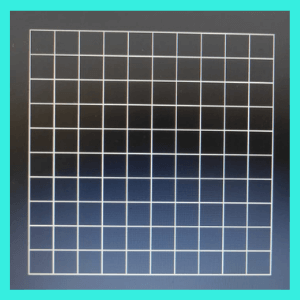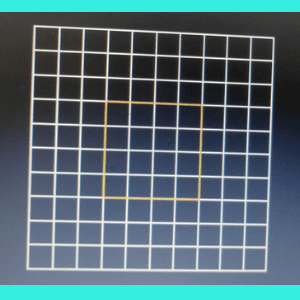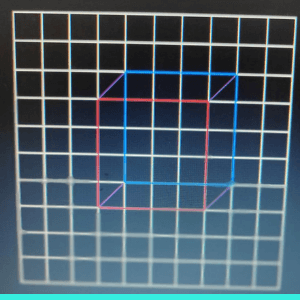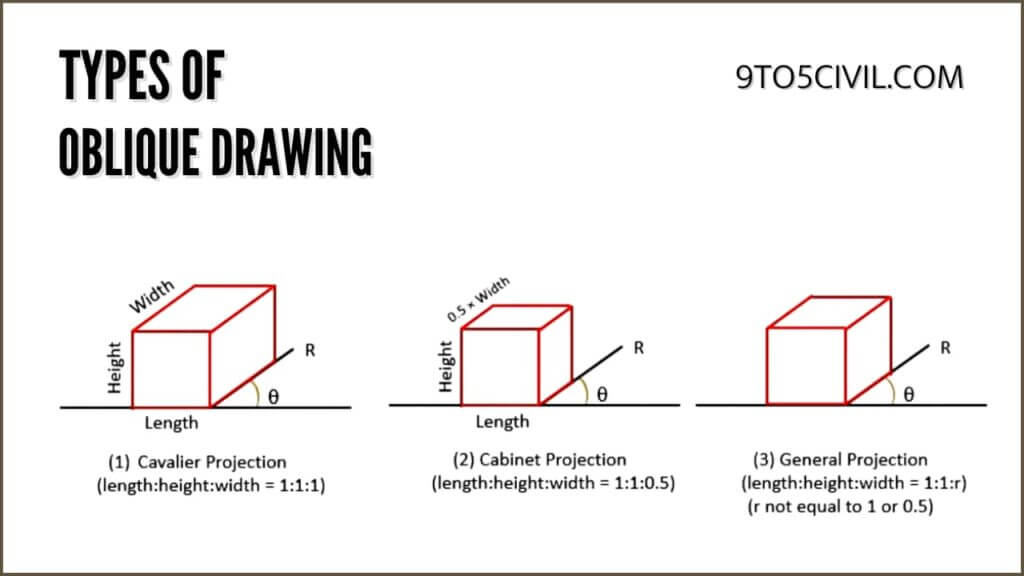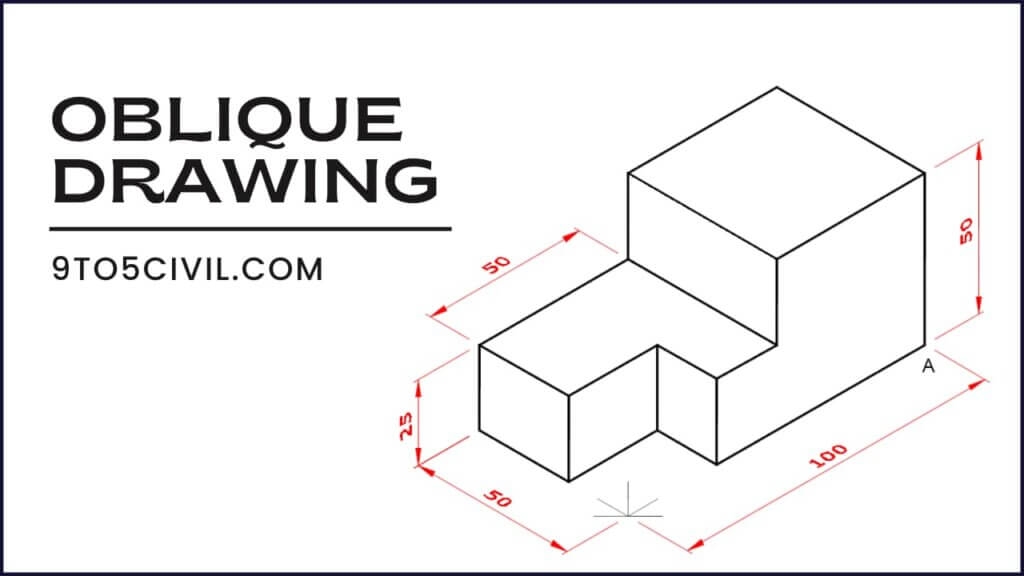
What Is Oblique Drawing?
Oblique drawing is a drawing in which the front view of the object is drawn to the correct size, and its side surfaces are drawn at an angle to give a pictorial appearance.
An oblique drawing can show an accurate front view of the object without distortion. Generally, an object’s face is called the front view.
Oblique drawings are usually used by them in the marketing department to explain the product and its features, to give a real idea of the object while processing the business.
Tracing drawing is also called the crudest “3D” drawing. This is the easiest way to master. Can be used to draw the side you are looking at in the dimensions of any object using diagonal view. Then the other sides of the object are drawn at an angle of 45.
But instead of drawing the full size of the sides, half of its length is drawn. In this way, the concept of an object as reality comes in the drawing.
Oblique Drawing
Oblique drawing is similar to isometric drawing. In the oblique drawing, the view of the object is parallel to the plan. And in isometric drawing, the object is drawn along the plan at an angle of 30. The angle of elevation on the side of the oblique drawing is kept at an angle of 30° to 60◦.
We may have seen many three-dimensional objects like a table, kitchen, basketball, etc. in our daily life around us. Now a three-dimensional object can be easily drawn on a two-dimensional plane with the oblique drawing.
This type of drawing is a type of technical drawing used for the construction of two-dimensional (2D) images of three-dimensional (3D) objects.
This type of drawing is not a thing but a technique to create a view of it. Which can be used to display useful images for understanding.
A cube is composed of a three-dimensional object. But let’s get an idea of how to draw a cube drawn on paper.
You all know that the paper plane is two-dimensional. But a cube-like three-dimensional solid can be drawn on paper.
Also Read: What is Tributary Area? | Tributary Area in Column | How to Calculate Tributary Areas
Oblique Projection
Diagonal projection and the orthographic projection are used to draw approximately parallel lines in the image through parallel lines of the object.
Oblique Projection was universally used by Chinese artists from the 1st to the 18th century. House-like objects and objects were displayed by Chinese artists.
Technical projection generally used diagonal projections. The fortifications were used by French military artists in the 18th century to show fortifications.
In the new century of computer graphics can now be designed using a variety of graphical projection techniques. These may include computer-aided design (CAD), computer games, computer-generated animation, and special graphical effects used in movies.
Also Read: What Is Concept Drawings? | Architecture Concept Drawing | Types of Drawings for Building Design
The Following Points Are Kept in Mind While Drawing a Diagonal Sketch
The front and back of the transverse sketch are to be kept the same size.
All the sizes are different in the cube but all the sizes are kept the same in the oblique drawing.
Procedure for Oblique Drawing Examples
Oblique drawing can be defined as a diagram depicting the perspective of an object in three dimensions.
Let us draw a 4 × 4 × 4 cube oblique drawing of the object on paper.
Step 1. For oblique drawing 4 × 4 × 4 cubes, take a square paper with lining as shown below.
Step 2. Draw a 4 × 4 cube according to the shape of the front view. Which is shown below.
Step 3. Draw a 4 × 4 cube according to the shape of the back view as shown above. Which is shown below.
Step 4. Now join the corresponding angles as shown in the figure below to give the shape of the cube.
Step 5. Show the hidden edges as dotted lines as shown in the figure.
An oblique drawing representing a cube of dimension 4 × 4 × 4 is ready which you can see.
Also Read: Cinder Block Vs Concrete Block | 11 Type of Concrete Block
Types of Oblique Drawing
- Cavalier Oblique Drawing
- Cabinet Oblique Drawing
- General Oblique Drawing
Cavalier Oblique Drawing
In this type of method, the side face of the object is measured in actuality and it is made according to the actual size in the drawing.
Cavalier Projection
Usually, in a drawing, a point of the object is represented by three coordinates, x, y and z.
On the drawing, the drawing of the object is represented by only two coordinates, “x “and” y”. The figure of an object on a flat drawing has two axes, x, and y while z is perpendicular. The length on these axes is drawn on a 1: 1 scale.
This type of drawing is similar to dimetric projections. However, it cannot be called an axonometric projection. Because in this type of projection the y axis is drawn diagonally. Which usually represents an arbitrary angle along the x-axis. Usually, the y axis forms an angle of 30 or 45 with the x-axis. The length of the third axis cannot be measured.
Cabinet Oblique Drawing
A diagonal drawing where half of the actual size of the side of the object is taken. In cabinet diagonal drawings, they are shortened by half of their true length to compensate for distortions and so that the human eye can study well. This is why cabinet drawings are the most used.
General Oblique Drawing
In this type of oblique drawing, two-thirds of the actual size of the object is taken to represent the side of the object.
Also Read:
- How to Replace Garage Door Bottom Seal?
- How to Install Vinyl Fences?
- How to Get Stamped Concrete Over Existing Concrete?
- How to Fix a Sliding Closet Door?
- How To Frame A Garage Door Opening?
- Cost of French Drain in Yard
- Can You Paint Roof Tiles?
- How Much Do Aluminum Shingles Cost?
Like this post? Share it with your friends!
Suggested Read –
- What Are Bond Breakers? | Materials Used in Bond Breaker | Type of Concrete Bond Breaker | Advantage of Bond Breaker
- How Much Does It Cost to Pave a Driveway?
- What Is Plaster? | Type of Plaster | Type of Plaster Finishes
- 10 Best Alternatives to Sliding Glass Doors
- 10 Different Types of Interior Doors
What Is the Angle of Oblique View?
An oblique view is a pictorial view of an object that shows its elevation, plan, or a section which can be used to scale with parallel lines projected from the corners, that is at 45 degrees or any other angle, which indicates the other sides.
What Is an Oblique Projector?
An oblique projection is a parallel projection in which the lines of sight are not perpendicular to the projection plane. Commonly used oblique projections orient the projection plane to be perpendicular to a coordinate axis, while moving the lines of sight to intersect two additional sides of the object.
What Is an Oblique Shape?
Oblique Shapes. When someone talks about oblique shapes, they refer to a shape, either plane or space, that has either an acute or obtuse (an oblique) angle. You can figure out if two planes are oblique or not by looking at the angle they create when they intersect.
Why Is Oblique Drawing Important?
The oblique drawing that we use represents the exact shape and size of one of the object’s faces. It is suitable for representing elliptical shapes and axonometric projections. Sizes can be compared easily because of the absence of perspective foreshortening. Leaving a few of the objects, it gives a three-dimensional view to most of them.
Where Is Oblique Drawing Used?
Oblique projection is commonly used in technical drawing. The cavalier projection was used by French military artists in the 18th century to depict fortifications.
 Skip to content
Skip to content
